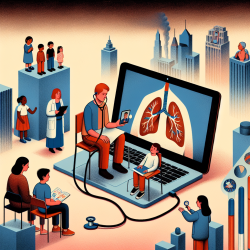Introduction
In the realm of public health, addressing social inequalities is crucial for ensuring equitable access to healthcare. The recent study titled “It felt like building a plane while in flight”: the consideration of social inequalities in the design and planning of a contact-tracing intervention for COVID-19 in Montreal, Quebec, provides valuable insights into how social inequalities in health (SIH) were considered—or overlooked—during the COVID-19 pandemic.
Understanding the Study
The study, conducted in Montreal, aimed to explore whether and how SIH were considered during the design and implementation of COVID-19 contact-tracing interventions. It highlighted that SIH were not initially prioritized, leading to challenges in effectively reaching underserved populations. The study underscores the importance of integrating SIH considerations from the onset of public health interventions to avoid exacerbating existing inequalities.
Key Findings
- Lack of Initial Consideration: SIH were not initially integrated into the contact-tracing design due to time constraints and limited resources.
- Adaptations Over Time: As the pandemic progressed, adaptations were made to better serve vulnerable populations, such as translating guidelines into multiple languages and collaborating with community organizations.
- Intersectoral Collaboration: Partnerships with organizations outside the health sector were crucial in addressing the needs of underserved communities.
Implications for Practitioners
For practitioners, this study highlights the need for a proactive approach in considering SIH when designing public health interventions. Here are some actionable steps:
- Advocate for Data Collection: Encourage the collection of sociodemographic data to better understand and address health disparities.
- Foster Partnerships: Build collaborations with community organizations to enhance the reach and effectiveness of interventions.
- Prioritize Equity: Ensure that equity considerations are central to the design and implementation of health interventions.
Encouraging Further Research
While this study provides a foundation, further research is essential to develop strategies that effectively integrate SIH considerations into public health planning. Practitioners are encouraged to engage in research initiatives and contribute to the growing body of knowledge on health equity.
Conclusion
The study from Montreal serves as a reminder of the critical role that SIH considerations play in public health interventions. By learning from these findings, practitioners can enhance their skills and contribute to more equitable health outcomes for all.
To read the original research paper, please follow this link: “It felt like building a plane while in flight”: the consideration of social inequalities in the design and planning of a contact-tracing intervention for COVID-19 in Montreal, Quebec.










